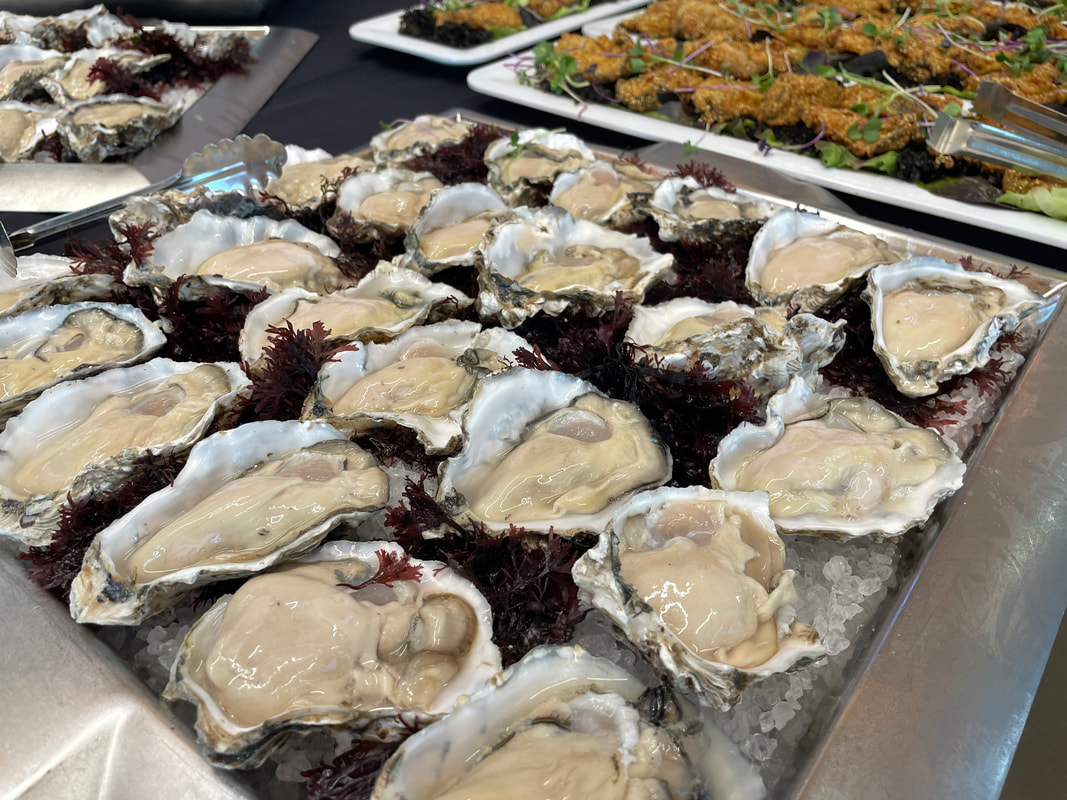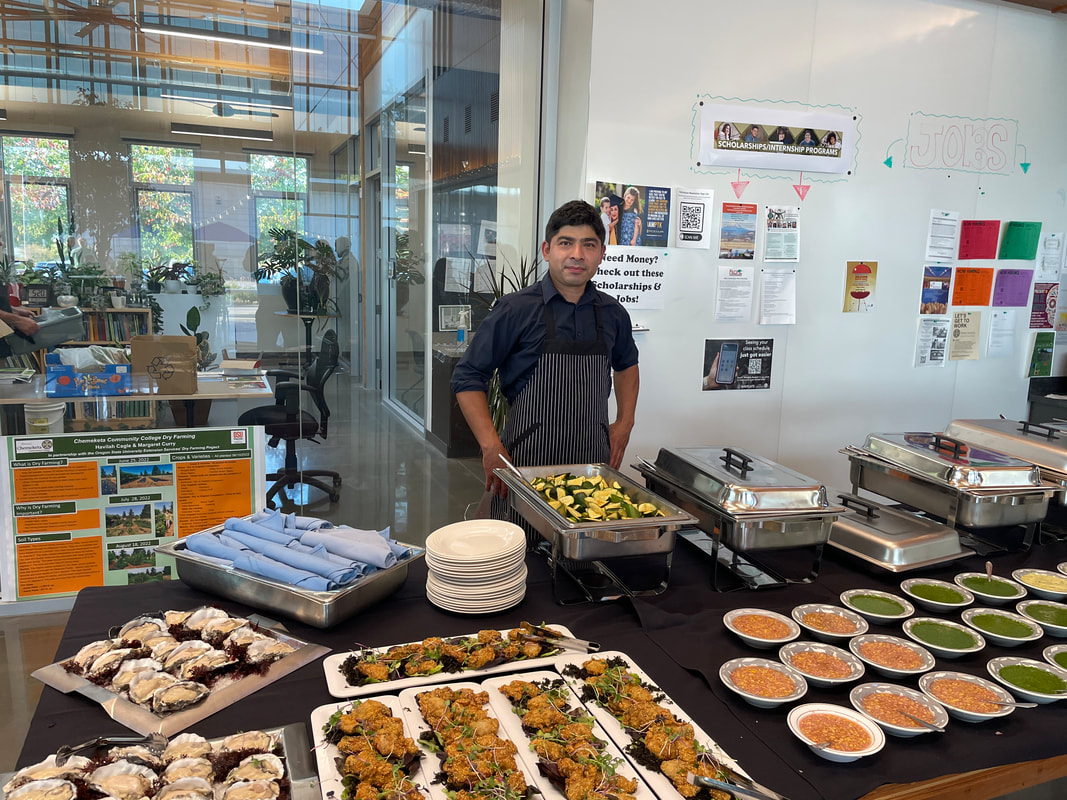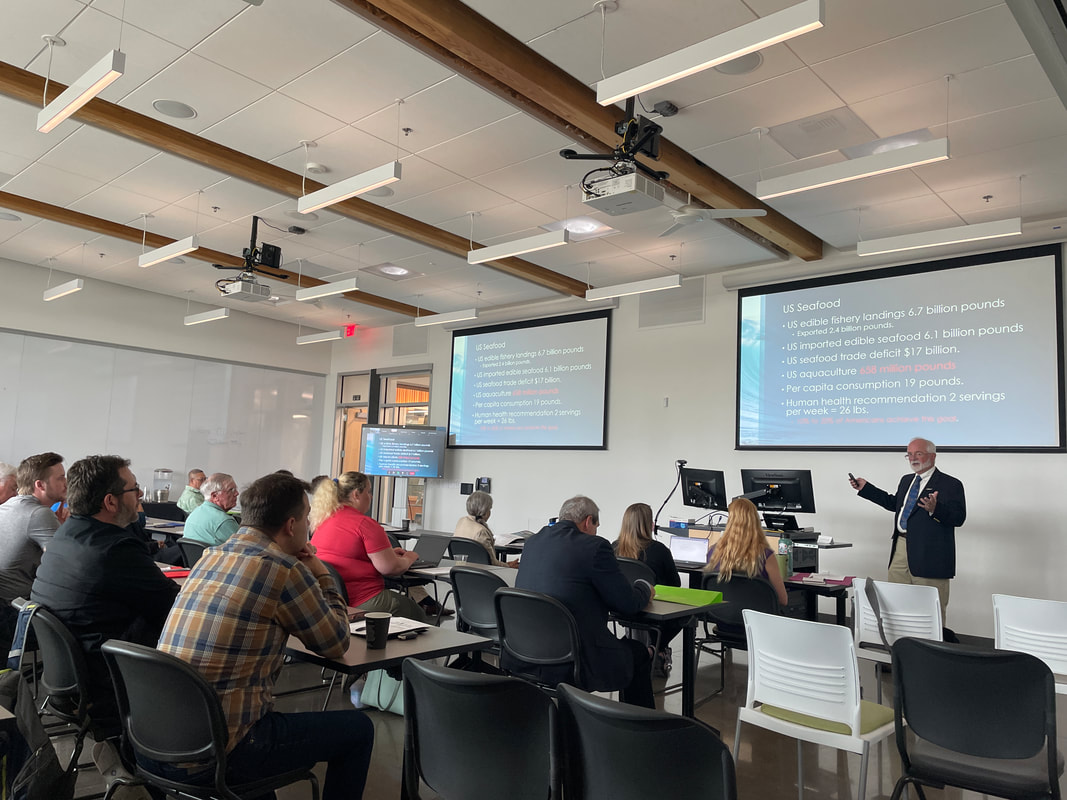|
As the Oregon and Pacific Northwest Aquaculture Development Conference has come to a close, we want to thank our speakers and panelists (listed below), sponsors (listed below), Chef Luis Cabañas and all those in attendance. The aim of the conference was to evaluate the current situation, understand barriers to growth, and develop strategies to promote sustainable aquaculture development. Attendees participated in interactive sessions, providing input that will help chart a path for expanded and responsible aquaculture investment. Conference attendees also gained perspective and appreciation of the promise of aquaculture (in Oregon and throughout the United States) as well as a comprehensive understanding of the necessary challenges to overcome in realizing this promise. Additionally, over beautiful cuisine from Chef Luis Cabañas, conference participants had an opportunity to network and connect with others in the industry, from farmers to researchers to agency and retailers and beyond. Thank you again to all in attendance! Below is a synopsis of the topics discussed at the conference: Investing in the Future Aquaculture has been practiced in Oregon for generations. However, most of the state’s limited aquaculture investments to date focus on shellfish, principally oysters, and salmonids. Based on USDA data, by value, 87% of the Oregon aquaculture private sector harvest is shellfish. Of the remaining 13% of the harvest attributed to finfish, 98% reportedly comes from trout. Trout and oysters have been the staples of Oregon aquaculture for decades — this not considering the large network of public sec-tor salmonid hatcheries and nurseries across the state. Addressing the Needs of Today The world’s population is growing rapidly, with increasing concerns for food security, even in more affluent regions. The World Bank predicts aquaculture will assume a greater and greater role worldwide in attracting investment and producing much needed food — contributing an estimated 60% of global seafood supply by 2030. The Aquaculture Development Conference The state possesses a unique mix of natural, human, market, and technological resources that offer real investment opportunities. The aim of the conference is to highlight these opportunities while making a realistic assessment of how success can be achieved and what pitfalls often lead to failure. Aquaculture is hard work and the val-ue chain complex, but these can lead to many profitable businesses Thank you to our sponsors! Chemeketa Community College Confederated Tribes of Siletz Indians Sea Grant Oregon State University Thank you to our speakers and panelists!
Randy Bentz, Oregon Aquaculture Association Karina Nielsen, Oregon Sea Grant Paul Zajicek, National Aquaculture Association Carole Engle, Engle-Stone Aquatic$ LLC Daisy Berg, New Seasons Warren Howe, Oregon Fish Co. Megan Judge, Oregon Aquaculture Association Tony Vaught, ProAquaculture Missy Bird, The Mermaid’s Garden Wally Pereyra, Arctic Storm Management Group Kellen Parish, NOAA / Oregon Aquaculture Association Miranda Ries, Pacific Seafood Steve Rumrill, ODFW Jim Johnson, ODA Call Nichols, Blue-Trace Joe Bratt, NWFC Ryan Anderson, Steward Foundation Alexis Nelson, Gybe Thomas Losordo, Pentair Aquatic Eco-Systems Katherine Onofryton, Aquatactics Joel Kelly, Live Local Organic Tom McDonald, Desert Springs Fish Hatchery Angee Doerr, Oregon Sea Grant Dan Tonnes, NOAA Brielle Cummings, USACE Dave Stone, FIC Erick Garman, ODA Chuck Toombs, Oregon Seaweed/Oregon Dulse Jeanne McKnight, NWAA Phil La Vine, CCC Laura Ferguson, Octant Consulting Paul Schuytema, Economic Development Alliance of Lincoln County Heather Desart, Northwest Oregon Works Corey Habiger, Worksource Oregon Jane Barth
0 Comments
Leave a Reply. |
Oregon Aquaculture Association
P. O. Box 1210, Turner, OR 97392
[email protected]
P. O. Box 1210, Turner, OR 97392
[email protected]
Copyright © Oregon Aquaculture Association



